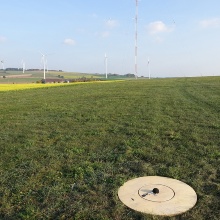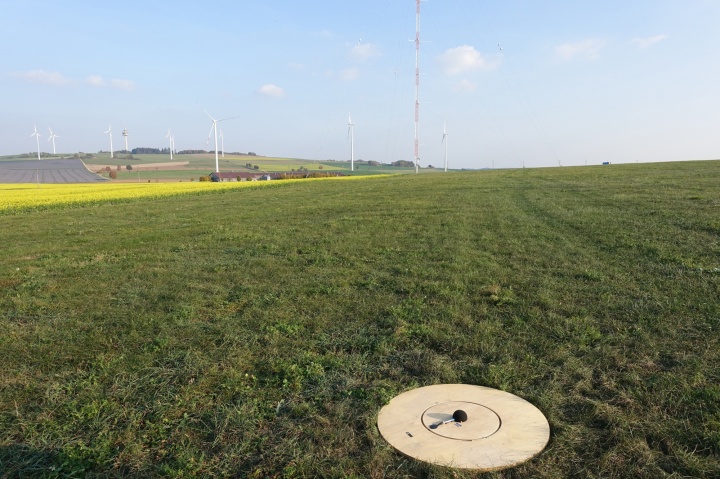Noise from wind turbines is a constant source of annoyance, despite compliance with emission control standards. But while some people feel heavily burdened by the noises, others hardly notice them. The Inter-Wind research project (Interdisciplinary Analysis and Mitigation Approaches - Residents' Experience of Acoustic and Seismic Wind Turbine Emissions), in which the University of Stuttgart is also involved, is investigating which factors interact in the noise pollution caused by wind turbines and which approaches for mitigation can be considered.
The factors in the generation and perception of noise from wind turbines are complex and can only be researched on an interdisciplinary basis. The research team therefore includes the Environmental and Social Psychology departments of MSH Medical School Hamburg and Martin Luther University Halle-Wittenberg, the Geophysical Institute at the Karlsruhe Institute of Technology (KIT-GPI), the Chair of Wind Energy at the Institute of Aircraft Design (SWE) at the University of Stuttgart, and the Center for Solar Energy and Hydrogen Research Baden-Wuerttemberg (ZSW), also based in Stuttgart. IFB/SWE, GPI und ZSW are members of the research cluster WindFors in the south of Germany.
The scientists are jointly investigating how meteorology and the geological subsurface interact in the propagation of sound and ground motion, how noise from wind turbines is perceived and assessed by humans, what factors influence noise perception, and what measures are perceived to reduce noise in certain weather conditions.
Based on the experience of a previous project “TremAc”, surveys as well as measurements of meteorological, acoustic, and seismic parameters are carried out. The scientists are also working together with the municipality of Kuchen, the citizens’ initiative “Windkraftanlagen Kuchen”, and the operators of the Tegelberg and Lauterstein wind farms. The WINSENT wind energy research test field near Stötten, which has just been approved and is currently under construction, is also involved. Wind speed and wind direction, atmospheric stratification, cloud cover, and precipitation are to be recorded with the aid of the measuring masts already erected. In addition, the respective propagation of sound waves in the air (acoustics) and elastic waves in the ground (seismology) are to be measured. The Chair of Wind Energy at the University of Stuttgart is responsible for the acoustic measurements.
However, in order to find transferable approaches, the measurements go beyond the test field: In the nearby Tegelberg and Lauterstein wind farms, further measurements of wind parameters, noise, and ground movement as well as surveys of local residents are carried out.
In addition to data analyses, a targeted testing of mitigation measures will first take place on the test field: The wind farm operators have declared their willingness to jointly test modified operating procedures in the commercially operated farms, should the results of the analysis encourage this.
Before and after the construction of the two research wind turbines that are planned for the test field, surveys of local residents will be carried out. People who live within a distance of five kilometers from the Tegelberg wind farm can take part in the telephone interviews. If you are interested, please contact Florian Müller, email: florian.mueller@medicalschool-hamburg.de
The project is funded by the Federal Ministry for Economic Affairs and Energy (BMWi) based on a resolution of the German Bundestag.
Expert Contact:
Esther Blumendeller, Stuttgart Chair for Wind Energy (SWE) at the Institute of Aircraft Design, Phone +49 (0)711 685-68328,
E-Mail



